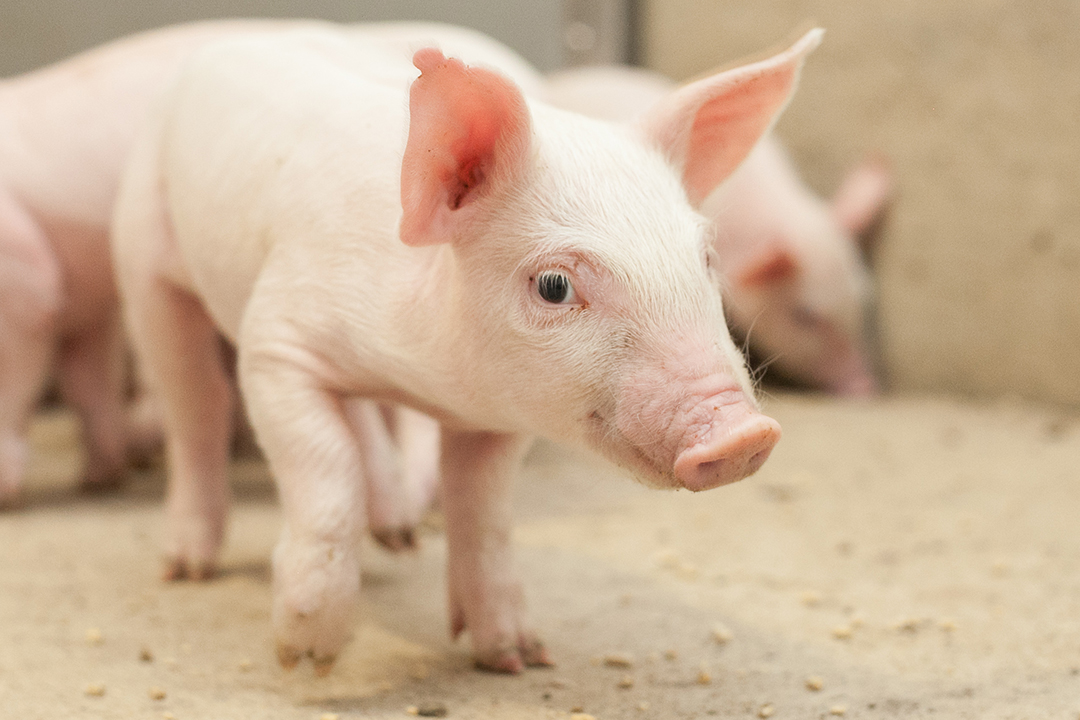
Collaborative research team teases out significance of stressors found in pigs’ hair
Stress. We’ve all been there — those moments of acute stress when we’re stuck in traffic or those periods of chronic stress when life seems to chuck all the lemons at us. But did you know that all of this stress information gets stored in your hair?
By Josephine LeeThat stored information is the focus of a collaborative research initiative between the Western College of Veterinary Medicine (WCVM) at the University of Saskatchewan and Iowa State University.
While Dr. Jack Dekkers of Iowa State leads the overall research project examining the genetics of disease resilience, the WCVM team is focusing on the analysis of pigs’ hair to better understand if hormones measured in the hair can provide information on stress and resiliency in swine. Dr. Yolande Seddon, an assistant professor in the WCVM’s Department of Large Animal Clinical Sciences, is leading this aspect of the project.
So how does hair reveal information about stress?
Whenever a stressor challenges an animal, it produces cortisol and dehydroepiandrosterone (DHEA) hormones — chemicals that travel throughout the body and progressively accumulate in the hair.
“The hormones are deposited into the hair gradually over time, as there is a little bit of blood at the tip of a hair, right where the root is embedded in [the skin],” explains Seddon.
“So as the levels of hormones circulate in the body, we understand that there is a deposition over time.”
By analyzing these deposits and determining the ratios of the hormones cortisol and DHEA in samples of swine hair, the WCVM researchers are exploring the ability to measure each animal’s physiological responses to the stressors in its day-to-day life.
While scientists require a wide range of technologies for their analytical work in the lab, the only equipment that they need on farm is a shaver. After shaving off a swatch of hair from the animal’s rump, the scientists take it to the lab for processing and hormone extraction. This non-invasive means for sample collection is relatively easy to do, and the sample can provide a wealth of information about an animal.
Cortisol, the body’s main stress hormone, plays an important role in the body’s regulation of stress. It helps to control blood pressure, blood sugar and nutrient metabolism, and it decreases inflammation.
However, cortisol can react to chronic stress by derailing the body’s most important functions and increasing susceptibility to disease. That’s where the other stress hormone DHEA gets involved.
“DHEA has a sort of opposing and protective function against the effects of cortisol,” says Seddon, who also serves as the NSERC Industrial Research Chair in Swine Welfare at the University of Saskatchewan. “So, there is a hypothesis that animals that might have higher levels circulating of DHEA could show more resilience.”
Like humans, each animal has a unique response to stress. While some animals are highly resilient and able to perform well even in poor environments, other animals are naturally prone to developing stress-related symptoms more easily.
As researchers develop a better understanding of the interactions between these two stress hormones, they hope to learn more about resiliency and the reasons that some animals are more resilient than others.
While studies investigating DHEA in animals are relatively new, research involving DHEA in humans has already indicated that people with higher levels of DHEA show greater mental resilience and decreased PTSD under stress — information that’s led researchers to nickname DHEA as “the resilience hormone.”
Seddon says the WCVM research team’s long-term aim is to look at hormones in hair as a means to evaluate animal welfare in current husbandry systems for swine. Since hair can also be stored long term, researchers and stakeholders can also keep samples for future studies as technology evolves.
As producers and governments work to meet the animal welfare demands of consumers, researchers are striving to ensure those demands can be met. Understanding the stories told by stress hormones in an animal’s hair is a huge step towards safeguarding animal welfare standards.
“We understand from surveys that most people expect or would like the animals that are raised for food to be well cared for and their well-being to be protected,” says Seddon. “So, if we can better monitor the well-being of all animals, we have an ability to monitor progress and to make continual improvements in how we care for them.”
The United States Department of Agriculture (USDA) National Institute of Food and Agriculture (Grant # 2021-67015-34562) provided financial support for this research project. The WCVM’s Interprovincial Undergraduate Summer Research program provided funding for a student position.
Josephine Lee of Vancouver, B.C., is a third-year veterinary student at the WCVM who worked as a summer research student in 2021. Her story is part of a series of articles written by WCVM summer research students.
